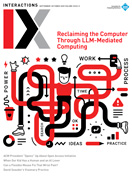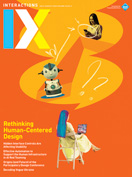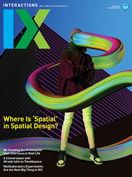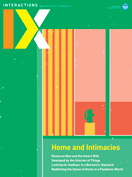Authors:
Hafeni Mthoko, Muhammad Adamu, Shaimaa Lazem
In 2006, Jonathan Grudin posited that the field of HCI might have no home or many homes [1]. This raises a range of questions about the status of HCI as either a metadiscipline, an eclectic discipline, or an interdisciplinarity. The HCI narrative in Africa is even more sporadic, with the continued tensions faced when importing and uncritically adopting HCI methods, approaches, and techniques to technology design projects there. Asserting an alternative constitution of identities in HCI, the subprogram of African HCI came about as a community of researchers and practitioners designing and evaluating interactive systems for African communities [2].…
You must be a member of SIGCHI, a subscriber to ACM's Digital Library, or an interactions subscriber to read the full text of this article.
GET ACCESS
Join ACM SIGCHIIn addition to all of the professional benefits of being a SIGCHI member, members get full access to interactions online content and receive the print version of the magazine bimonthly.
Subscribe to the ACM Digital Library
Get access to all interactions content online and the entire archive of ACM publications dating back to 1954. (Please check with your institution to see if it already has a subscription.)
Subscribe to interactions
Get full access to interactions online content and receive the print version of the magazine bimonthly.






